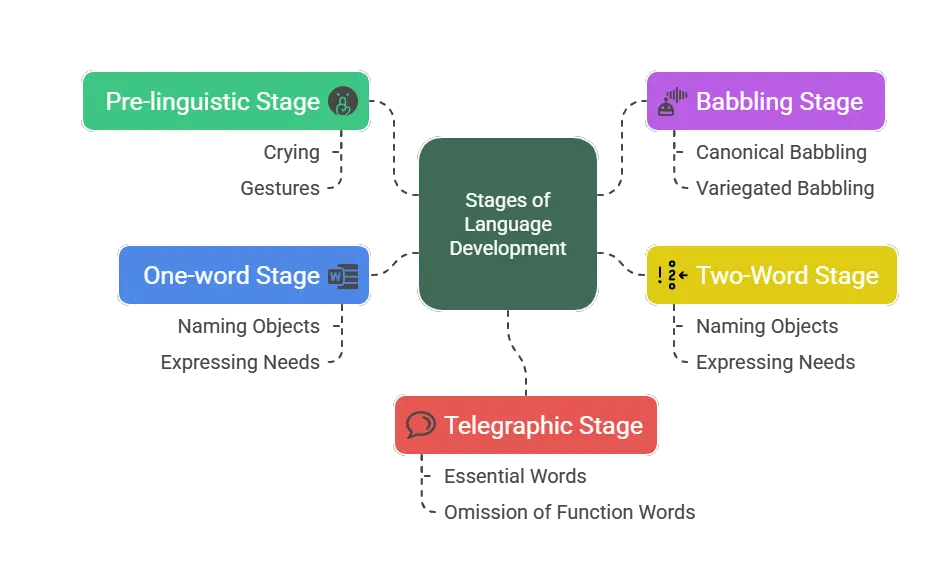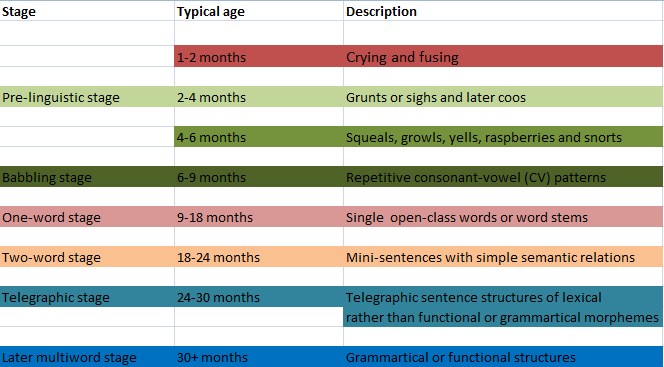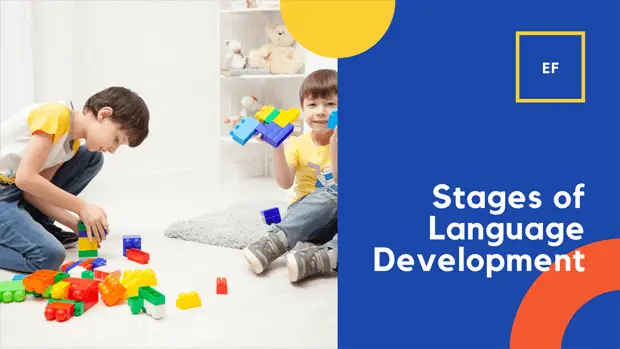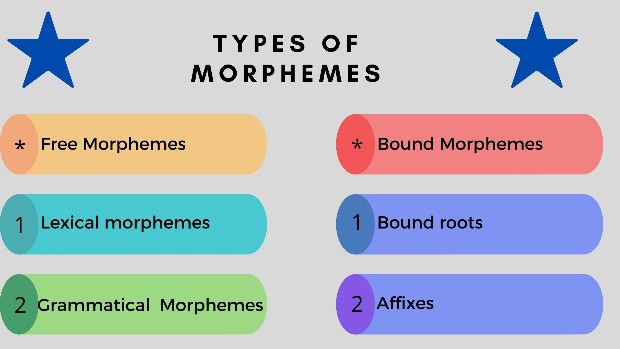Last updated on June 18th, 2025 at 02:15 pm
The stages of language development are essential parts of linguistics. Language plays a vital role in communicating with each other, from one country to another. Every language has its characteristics and objectives. Now, the question is how language is developed in children.
A child acquires a language or mother tongue through different stages. After finishing all the stages, the child can achieve their mother tongue. Understanding the stages of language development is important, especially for English learners. It helps us see how language skills grow over time, from simple sounds to full sentences.
In this article, we’ll explore five key stages: the Pre-linguistic Stage, Babbling Stage, One-word Stage, Two-word Stage, and Telegraphic Stage. Each stage plays a special role in shaping how we learn to speak and understand a language.
What Is the Language Development Process?
Quick Navigation
Language development is the process by which we learn to understand and use language to communicate with others. It starts from the moment we are born and continues throughout our lives. This process includes learning how to listen, speak, read, and write.
From babies making their first sounds to adults having complex conversations, language development helps us share ideas, express feelings, and connect with the world around us. It involves learning words and understanding grammar, sentence structure, and the meaning behind what people say.
In short, language development is the journey of learning to communicate effectively, step by step, from simple sounds to full conversations.
5 Stages of Language Development
The stages of language development describe how we learn to understand and use language, starting from birth. These stages are not just for babies—they also give us clues about how people learn a new language, like English, at any age. Each stage builds on the one before it, helping us move from simple sounds to meaningful conversations.
There are five main stages of language development:

- Pre-linguistic Stage – when babies make sounds and learn how to listen
- Babbling Stage – when babies start playing with sounds like “ba” or “ma”
- One-word Stage – when a single word can express a whole idea
- Two-word Stage – when two words are put together to form short sentences
- Telegraphic Stage – when children start forming simple sentences with important words
These stages happen naturally, usually during a child’s first three years of life. But the development pattern is also helpful for anyone learning a new language. It reminds us that speaking doesn’t happen all at once—it grows step by step. Let us see the stages of language development. We mainly analyze the five stages of child language acquisition.
The five stages of language development in children are demonstrated in the table below:

Now let’s walk you through the 5 significant stages of language development:
1. Pre-linguistic Stage
The pre-linguistic stage is the core of child language acquisition. This stage begins at birth and continues until the child is six months old. During childbirth, the baby’s vocal tract is here and there, more like a chimp than a grown-up human. Specifically, the tip of the velum reaches or covers the tip of the epiglottis. As the newborn child develops, the tract, bit by bit, reshapes itself in the grown-up example.
In the first two months of life, a newborn child articulates distress with crying. Some non-reflexive, non-trouble sounds are delivered with a brought down velum and a shut or almost shut mouth, giving the impression of a syllabic nasal or a nasalized vowel.
At 2 to 4 months, the newborn child starts expressing alleviation sounds. The soonest alleviation sounds, possibly snort or moans, with the later forms being vowel-like ‘coos.’ A child can laugh around three or four months after birth.
At the age of 4 to 6 months, newborn children usually participate in ‘vocal play.’ They can produce different types of sounds, such as friction noises, nasal murmurs, etc.
Key Features of the Pre-linguistic Stage:
- Age Range: Birth to 6 months
- Main Activities: Crying, cooing, smiling, eye contact
- Focus: Listening and responding to sounds
- Example: A baby smiles and coos when they hear a familiar voice
2. Babbling Stage
The Babbling Stage is the second step in the stages of language development and usually happens between 6 to 9 months of age. At this stage, a child can produce sounds by using their speech organs. Not only that, but those children begin to make extended sounds by oral articulations into syllable-like arrangements, opening and shutting their jaws, lips, and tongue.
Children often produce fricatives, affricates, and fluids at this stage, but rarely. In any event, at the outset, vowels will, in general, be below and open. Sometimes, they produce [bababa] or [nanana] etc.
In the Babbling stage, children produce random sounds with their speech organs. Vocal play and Babbling are produced when interacting with their parents or relatives. In this stage, a child randomly grows a variety of sounds, and sometimes, these sounds partly match their mother tongue.
Key Features of the Babbling Stage:
- Age Range: 6 to 9 months
- Sounds: Repetitive syllables like “ba-ba,” “ga-ga,” or “ma-ma”
- Skills Developed: Control of mouth muscles, listening, and sound imitation
- Example: A baby sees their toy and says “ba-ba” while smiling
3. One-Word Stage
Children create or repeat single-word utterances between 9 and 18 months, known as the “one-word stage.” Children go through this stage by acting on their surroundings by touching, gripping, looking at, and manipulating the objects that are readily available to them.
By the time they reach the end of this phase, they can recall events that happened a day or more later and have a general understanding of the functions of the items.
After moving past the babbling stage and learning a lot about the function of items, children start pronouncing single words. Infants experiment with and practice many of the sounds that will eventually be combined into meaningful words by repeating syllables.
Children may acquire extensive grammatical knowledge and experience between the ages of 12 and 20 months. One-word utterances are used in place of complete phrases during this time. Children who have reached the word-word stage may use one or two sentential greetings, such as “hello,” “oh,” and “etc.”
Key Features of the One-Word Stage:
- Age Range: 9 to 18 months
- Speech: Single words with full meaning
- Vocabulary: Names, objects, actions, needs
- Example: Saying “cookie” to mean “I want a cookie”
4. Two-word Stage
The two-word stage begins when a child becomes one year or one and a half-year-old. In this stage, children pronounce from one word to two words. At the same time, children start developing their sound production capability.
In the two-word stage, children subconsciously follow some grammatical rules in their sentences. We can find some inflections at the end of the two-word stage of a child, and they can describe an event by grammatical functions. This is how a child finishes their two-word stage by producing many sounds and combining them into sentences.
Key Features of the Two-Word Stage:
- Age Range: 18 to 24 months
- Speech: Two-word phrases with clear meaning
- Structure: Basic grammar and word order start to appear
- Example: Saying “more juice” to ask for another drink
5. Telegraphic Stage
The age of 24 months to 30 months seems to be a child’s telegraphic stage. In this period, children start producing expressions with more than two elements, and the expressions of children are longer than two words and have meaningful characteristics.
For example, the little capacity words, too, the a, can, is, and so on, are missing; just the words that convey the primary message, the substance words are utilized. The expressions like feline stand up the table, what that, no stay here, etc., do not have the capacity words. These expressions are called the telegraphic stage.
The telegraphic stage incorporates just morphemes and words that convey essential semantic substance.
Key Features of the Telegraphic Stage:
- Age Range: 24 to 30+ months
- Speech: 3–5 word phrases that are short but meaningful
- Example: Saying “Daddy eat food” instead of “Daddy is eating food”
Conclusion
To sum up, this is how a child develops their language. These five stages of child language development enable children to improve their mother tongue.
Understanding the stages of language development helps us see how language grows naturally, from simple sounds to full sentences. Each stage, from the Pre-linguistic Stage to the Telegraphic Stage, plays a key role in building the foundation for communication.
Sources
- Dulay, H.C., & Burt, M. K. (1972). Goofing: An indication of children’s second language strategies. Language learning 22, 235-252.
- Dulay, H.C., & Burt, M. K. (1974). Natural sequences in child second language acquisition. Language Learning 24, 37-53.
Have a look at these useful links:
- What is Psycholinguistics in linguistics?
- Difference between Phonetics and Phonology
- Characteristics of language
- Definition of language by scholars
- Definition of Syntax in Linguistics

Azizul Hakim is the founder & CEO of englishfinders.com. He is a passionate writer, English instructor, and content creator. He has completed his graduation and post-graduation in English language and literature.





useful and concise information 😀